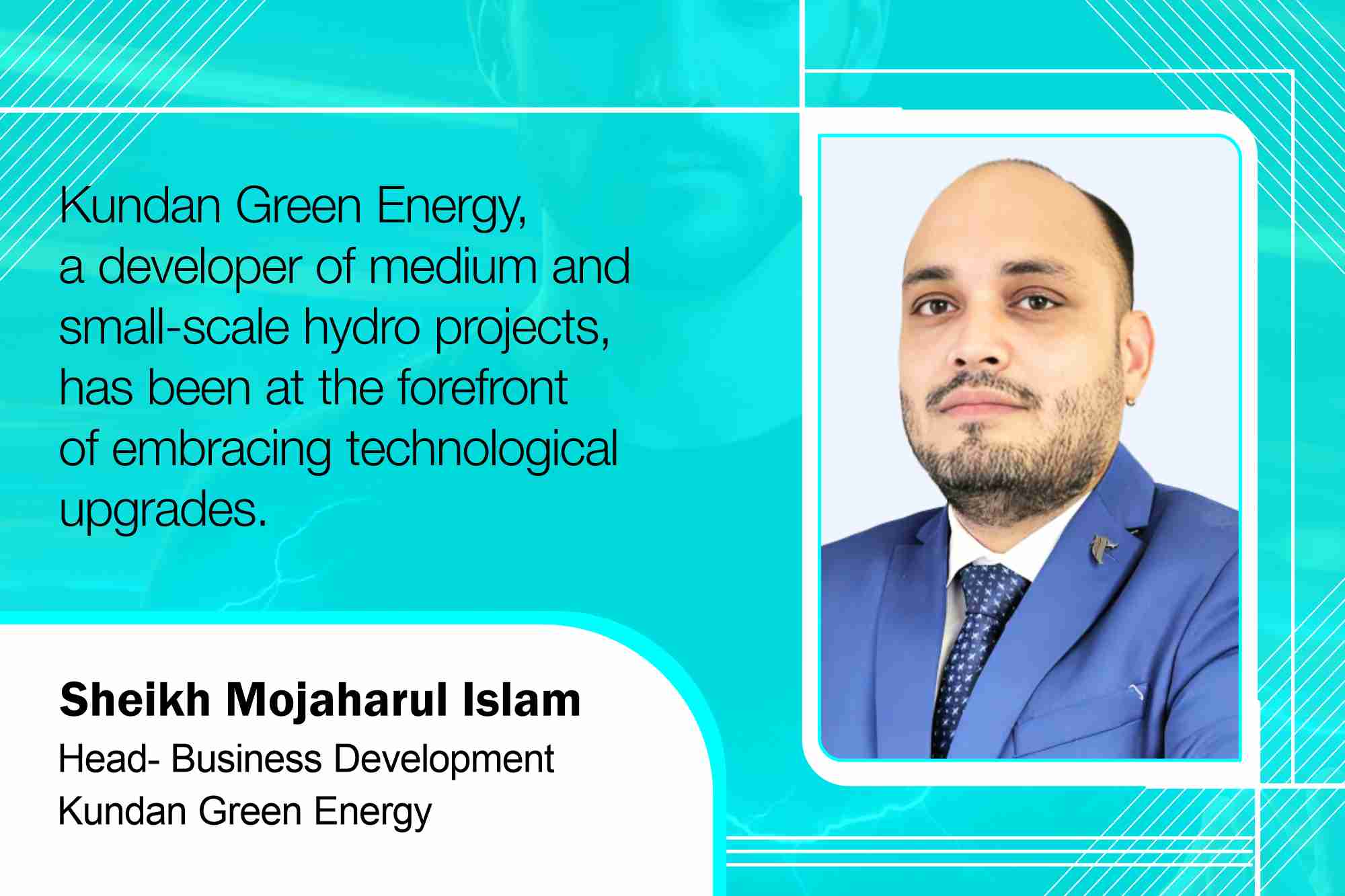Smart Hydropower with digital upgrades and storage is fuelling clean energy drive
By Staff Report May 23, 2025 3:54 pm IST
By Staff Report May 23, 2025 3:54 pm IST

Hydropower not only provides clean energy but also offers round-the-clock (RTC) power, making it a crucial substitute for conventional thermal power plants.
India is ambitiously targeting 500 gigawatts (GW) of renewable energy capacity by 2030. As of the last financial year, the country has already achieved around 220 GW of renewable capacity, with solar energy leading the way at 110 GW. Large and small hydropower follows with approximately 55 GW, while wind energy contributes over 50 GW. This is an impressive milestone that showcases the country’s progress. However, within the broader renewable energy landscape, hydropower holds a unique and strategic position. It provides clean energy and round-the-clock (RTC) power, making it a crucial substitute for conventional thermal power plants.
Kundan Green Energy, a developer of medium—and small-scale hydro projects, has been at the forefront of embracing technological upgrades. Operating across regions like the Northeast, Himachal Pradesh, and Uttarakhand, the company focuses on modern innovation that can improve hydroelectric generation and make it more efficient and sustainable.
Digitalisation and tech advancements in hydropower
One of the key changes in the hydro sector is the integration of digital technologies. Earlier hydro plants, particularly in the 80s and 90s, mainly operated with manual systems, which limited operational transparency and efficiency. Today, digitalisation has changed the way plants are run. We can now access real-time information about water flow, weather patterns and machine performance through data-driven operations, allowing us to optimise operations effectively. Installing programmable logic controllers (PLCs), remote control systems and solenoid-based gate operations have increased reliability and significantly improved the plant load factor (PLF). While older hydro projects typically operated at a PLF of 45–48 per cent, newer digitally enabled plants are now achieving PLFs of 70–75 per cent, indicating a remarkable jump in performance.
Turbine technology has also evolved significantly. Traditionally, the same types of turbines were used across varied projects. But with advancing research and customised engineering, we are now using variable-speed turbines that adapt to fluctuating water flow levels, making generation more stable.
Fish-safe turbines are another notable advancement. These are designed to allow aquatic life to pass safely through the system, significantly reducing outages and environmental concerns related to aquatic disruption. These modern turbines ensure ecological harmony and reduce operational stoppages due to debris or marine life interruptions.
Civil engineering and design advancements have also contributed to improved efficiency and reduced construction timelines. More compact, modular designs and innovations in dam gates and water channels allow better control and flexibility in plant operations. Similar to the way solar energy has moved from 200-watt polycrystalline panels to over 600-watt high-efficiency modules, hydropower infrastructure is also evolving rapidly.Role in energy storage and grid stability
Moreover, hydropower is now vital in energy storage through pumped storage projects. These facilities store energy by pumping water into reservoirs during surplus power (like daytime solar peaks), releasing it during peak demand hours, especially at night. This stabilises the grid and reduces reliance on thermal power, making hydro an indispensable part of the clean energy transition in India. High-voltage transmission lines, improved grid integration and reduced transmission losses further enhance the viability of remote hydro projects.
In this era of rapid technological evolution, embracing modern methods is no longer optional; it is essential. Hydropower, backed by intelligent digital systems, advanced turbines and integrated storage solutions, is set to play a defining role in the nation’s journey toward a more sustainable and reliable energy future.
We use cookies to personalize your experience. By continuing to visit this website you agree to our Terms & Conditions, Privacy Policy and Cookie Policy.